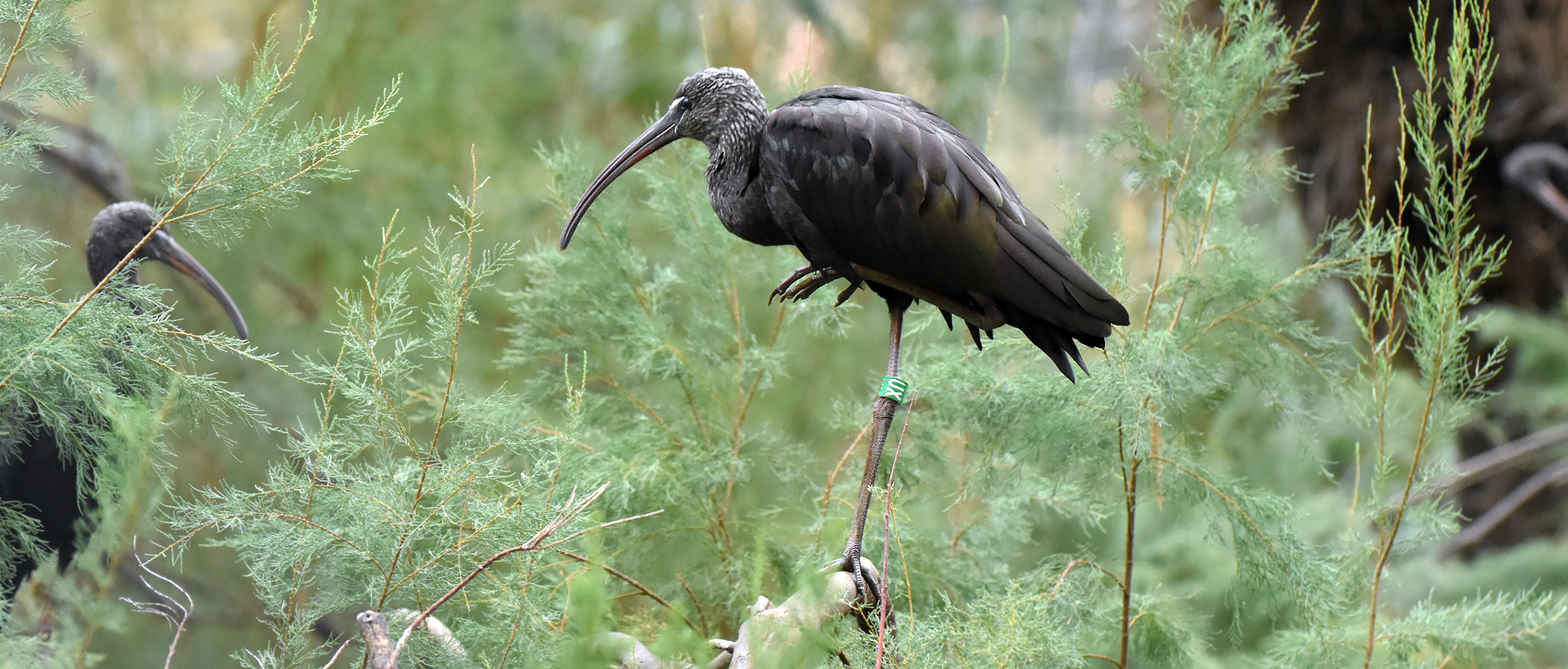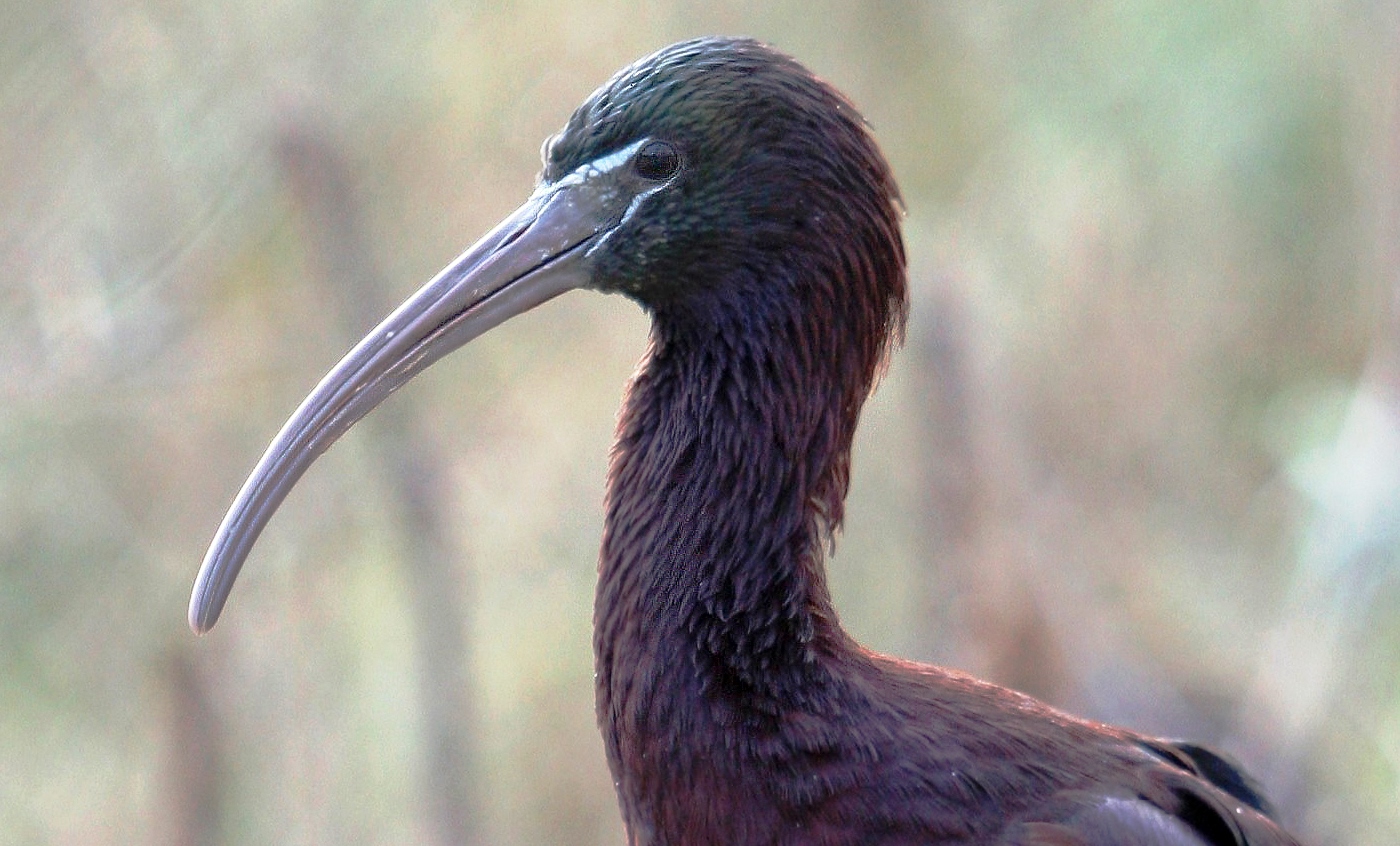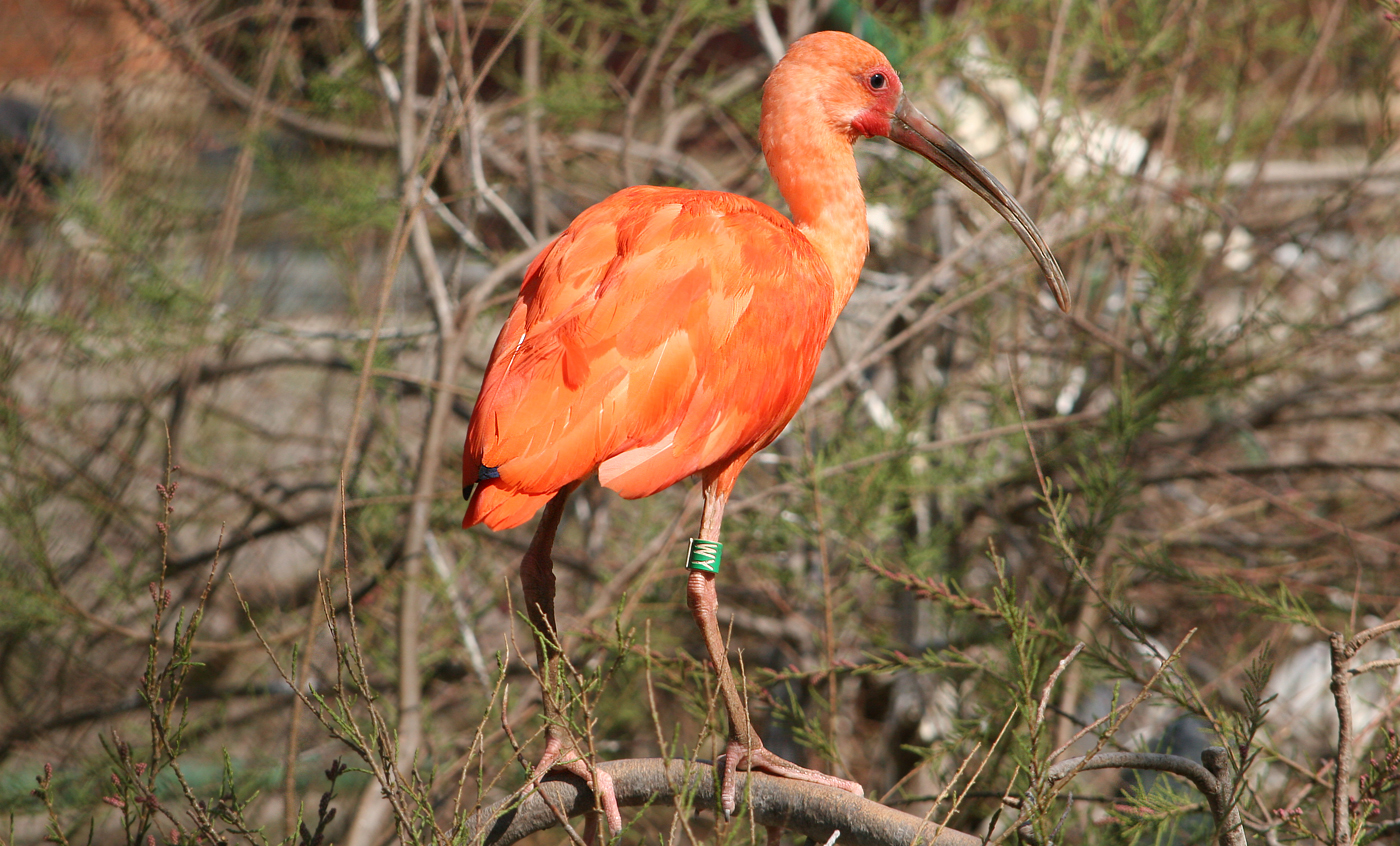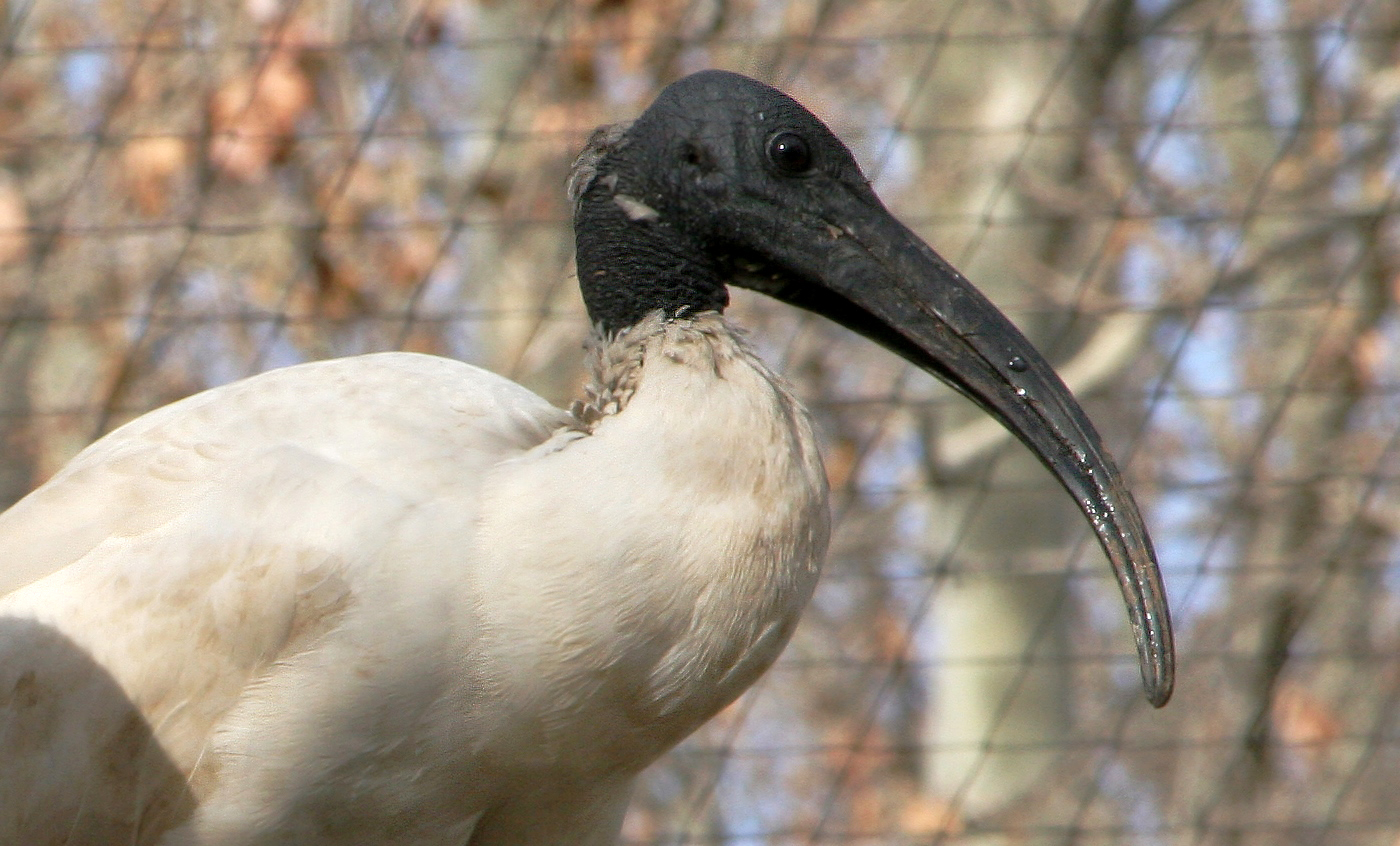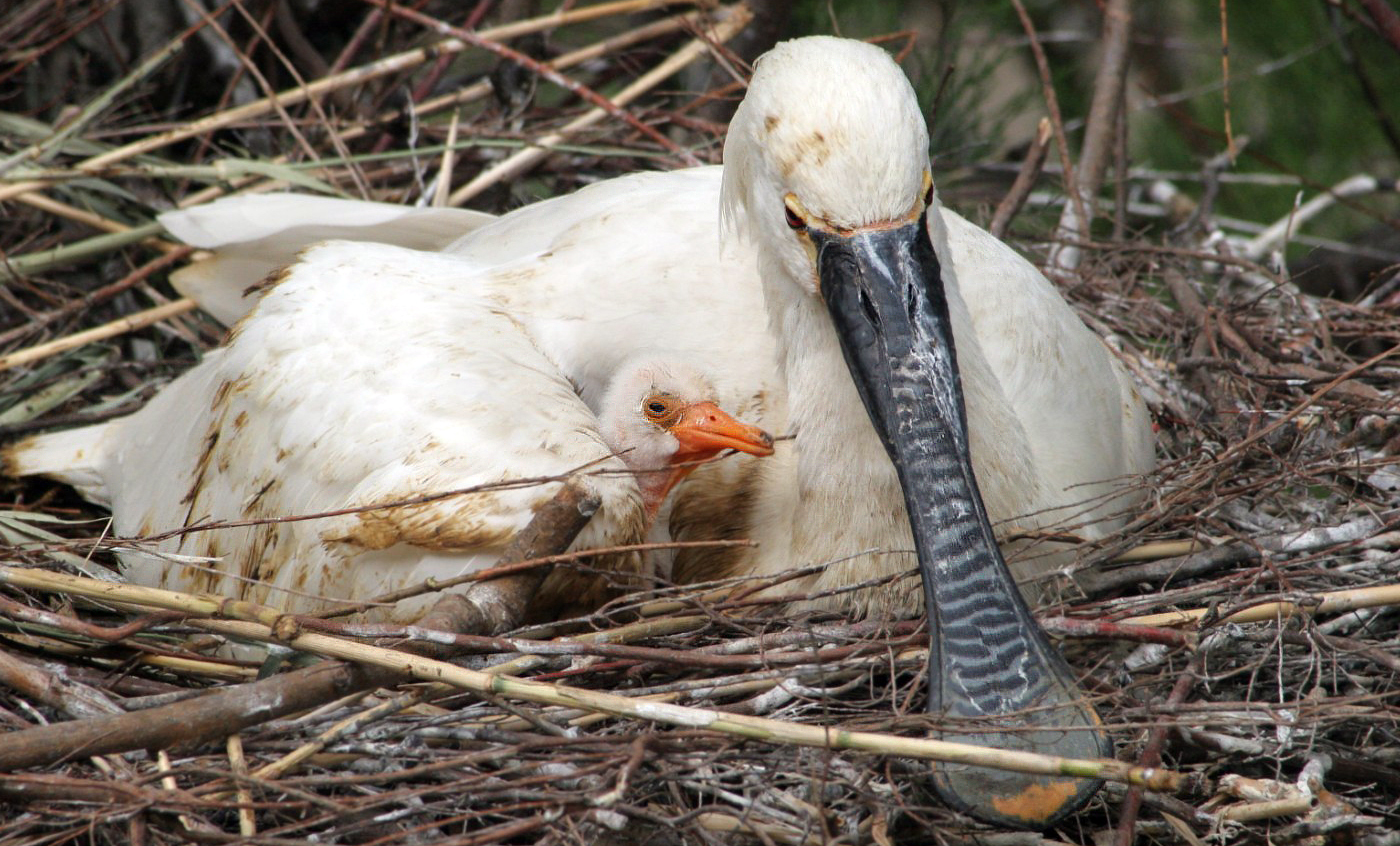Glossy ibis
The glossy ibis is unmistakable for its long, curved bill, its slender silhouette and iridescent plumage with metallic sheen glinting in the sun. It can be typically found in marshland, usually in the company of herons and spoonbills, who it shares breeding colonies with. After many years, it has finally begun breeding again in various parts of mainland Spain. Its diet consists mainly of invertebrates.
Natural habit
Southern Europe, Africa and Madagascar, central and southern Asia, the Philippines, Indonesia and Australia.
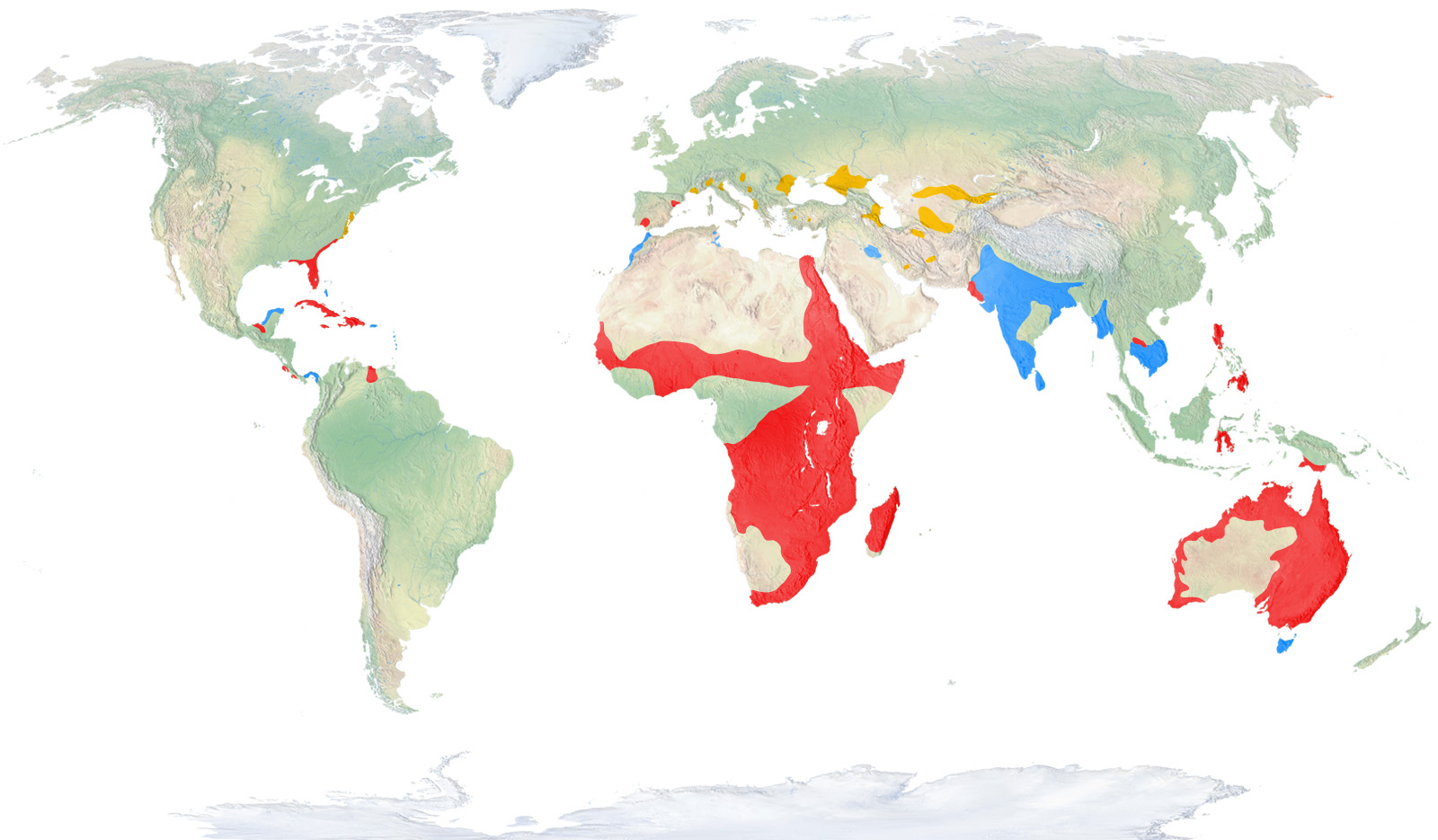
- Distribution / Resident
- Breeding
- Wintering
- Subspecies
Risk level
- Extint
- Extint in the wild
- Critically endangered
- In Danger
- Vulnerable
- Near threatened
- Minor concern
- Insufficient data
- Not evaluated
Taxonomy
Physical characteristics
Biology
Reproduction
Biology
It is the smallest dark ibis species. It can be distinguished by its curved bill, slender silhouette and its iridescent plumage that shines under the sun, with a metallic hue. This species has light coloured lines around the bill. It is the only ibis species currently living naturally in Europe.
It is typical from marshlands and coastal environments.
It searches food either in marshlands and areas farther from water. Its diet is based on insects and their maggots, molluscs, crustaceans and worms, although it can also eat small amphibians, reptiles and fish. It looks for food in swallow fresh waters and clearly prefers rice crops.
During the reproductive season, it associates with little bitterns and spoonbills, with whom it shares breeding colonies. This period starts on April and continues until the end of June. It builds a steady platform made of canes and branches, where it lays three to four eggs, that it broods for 21 days..
It has a strongly migratory and dispersive behaviour, and is remarkably nomad. Although sedentary in great part of its distribution area, in many areas of Europe and Asia it is considered a summer breeding species. In the Indian subcontinent and in some locations of South-east Asia, it is regularly spotted during winter.
Despite being a species with a wide worldwide distribution, the European subspecies has suffered a hard regression since the 19th century and has disappeared from most of the European countries.
In Spain, it ceased to breed at the beginning of the 20th century, but by the end of the same century, it began to reproduce again in places like Doñana, the Albufera in Valencia or in the Ebre Delta. Nowadays the population is recovering considerably in these areas and many other.



